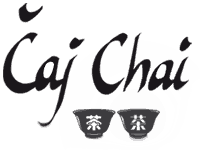
One of the major highlights on the tea lover’s calendar is the coming of Spring and the fresh first flush harvests from our favorite countries. Japanese tea lovers eagerly await this first pick of the Ichibancha (Spring) season, which is called Shincha or “New Tea”.
Shincha is a very traditional tea that has been undergoing changes in recent years that I’d like to explain briefly. Traditional Uji Shincha is special, not just for being the first pick of the season, but for its special processing which leaves 5% residual water content in the leaves, rather than the usual 3%. This higher water content in the leaf means that the leaf is much more perishable and loses freshness much quicker. The usual consensus is that traditional Shincha must be drunk within the first 30 days, although more permissive enthusiasts argue that it can last 60 days without deteriorating if stored properly. The reasoning is that over time the extra water content dulls its special freshness. Personally, I think that the fresher the better, but where exactly you put the limit on its perishability depends on the sensibility of your palate and whether the leaves are air-tight or not.
In any case, due to its perishable nature, Shincha production involves risk for the producer and for the customer. If the tea doesn’t sell it becomes worthless on the market, not to mention nobody purchases too much to begin with…. You just don’t stock up on Shincha! The customer is at risk of spoilage if not enjoyed quickly enough.
Fortunately their are many purists who continue making traditional Shincha like Mr. Chity in Uji, but nowadays their is a clear trend of making a more completely processed -and more stable- Shincha, that won’t detiorate over time. This type of early spring tea used to just be called Ichibancha Sencha but now more and more people are referring to it as Shincha. A Shincha that stands out for the freshness and potency of the first flush leaves but that doesn’t carry any of the buyer and seller beware traits that traditional Shincha possesses.
This year, for the first time, we’re also offering this second type of Shincha for two reasons:
1) this particular Shincha is incredibly good (I mean bordering gyokuro good territory) and handles additional infusions with unrivaled ease for a Japanese green tea.
2) It costs half the price since it can be produced in larger quantities.
3) This modern Shincha we are offering has Chumushi processing (mid-steamed), whereas our tradicional Shincha is Asamushi (lightly steamed, as traditional Shincha should be). This additional steaming makes the two teas incomparable and each of them worthy of our attention and enjoyment.
So what do we lose? Well, for starters, we pay the price of losing culture and failing to participate in tradition. We also lose some of the freshness, the briskness and the classic noble bitterness of the traditional Shincha with the higher water content.
We hope you try both, discover them both, understanding why the teas and their prices are so different and come to your own conclusions. We’d love for you to share your impressions with us!



